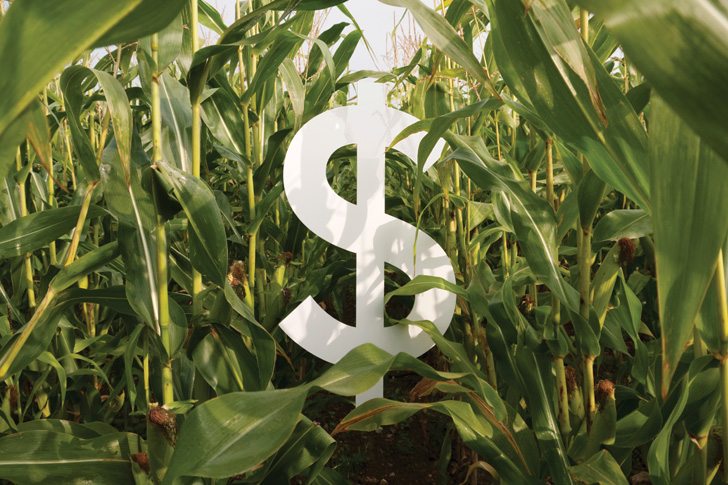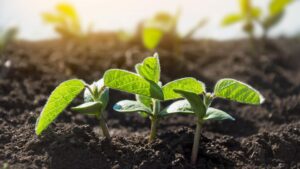Low commodity prices and increasing regulatory hurdles have curtailed seed treatment use the past few years; however, experts say that the weather and growing insect and disease pressures might change that trend.
With a slow economy and lower prices for corn and soybeans, seed treatments have been a tough sell for the past few years.
That could be changing, as a number of factors have come together to improve the outlook. A better economy, growing disease and pest pressures, and new technologies may lead growers to increasingly turn to seed treatments to protect their crops.
From 2012’s historically high prices when corn reached more than $8 per bushel and soybeans approached $18 per bushel, prices have dropped and somewhat leveled out to about $3 and $4 for corn and $8 and $10 for soybeans. These prices led growers to look for cost-cutting measures.
“They’re trying to save that little bit of money to add to the bottom line or so that they have the opportunity to do a full fertilization program,” says Kurt Seevers, technical development manager for seed treatments and inoculants at Verdesian Life Sciences.
Seevers believes if corn and soybean prices rise, growers will consider adding more treatments to their seeds, and it’s possible that circumstances could speed that up.
“If they have specific problems they need to address, and they can do it with a seed treatment, we may see them come back sooner,” Seevers says.
Mark Reisinger, seed treatment marketing manager at DuPont Pioneer, believes Mother Nature could be that catalyst. Large portions of the Midwest experienced a mild winter, and spring has been especially wet and cold. “These are important factors for growers who may be considering seed treatments to protect against pathogens,” says Reisinger, who expects fungal pressures to be considerable this year.
Dupont Pioneer is also rolling out a new treatment, Lumisena, that will protect against Phytophthora. Reisinger says even with growers pinching pennies, they’re likely to be interested in products like this that address significant pressures.
The mild winter may also increase insect pressure, boosting the demand for insecticides in seed treatment formulas. “If you haven’t used insecticide in seed treatment, this is the year to use it,” Reisinger says.
Regulation Issues
Even if this year’s weather entices some growers to increase seed treatment usage, there are still regulatory issues that have been difficult for the industry to grapple with in recent years. That’s unlikely to change.
Martin Gruss, global head of Bayer SeedGrowth, points to neonicotinoid restrictions in the European Union in 2013 that affected oilseed rape. He says a study commissioned by Bayer and Syngenta found that the rules cost the oilseed rape industry hundreds of millions of euros per year and cost farmers who faced increased input costs. As well, there were losses caused by yield and quality reduction.
Ioana Tudor, Syngenta’s global head of Seedcare, says there is also uncertainty surrounding tightened rules stemming from Europe. Some proposed rules would require so many costly studies that they could simply force many companies out of the market.
“They are so unrealistic that probably most of the insecticide seed treatments would no longer be available to use in Europe if that regulation becomes law,” Tudor says.
Those restrictions are also eyed by some, including non-governmental organizations, that want tighter controls in other places, including the United States.
Tudor adds that regulation is also taking older products, deemed unsafe or damaging to the environment, off the market. And as the cost of bringing new products to market rises, it will be increasingly important to protect those investments.
She says businesses today face a significant challenge in educating consumers on the importance of mixing modes of action to reduce the buildup of resistance.
Using seed treatments in combination with other inputs is a strategy companies can push to tackle resistance issues that are becoming more prevalent, especially in places such as Brazil, where pest pressure is high and spodoptera’s resistance to new traits has been documented after just a few years on the market.
“That puts more and more pressure on the new chemistry. It’s really important to look at alternate modes of action — not to look within the same category — but across categories,” Tudor says. “Seed treatments are a great complementarity tool to support and extend the lifetime of biotech traits.”
Looking Forward
While seed treatment companies are still developing chemical ingredients to address insect and pathogen pressures, there is growing emphasis on biological solutions. Adding micronutrients or bacteria that can stimulate root growth and plant strength are becoming more effective.
“Combined with chemical crop protection agents, biologicals can contribute to fighting resistance and extending efficacy,” Gruss says. “Biologicals based on microbes are known to have season-long effects on their surroundings, something we refer to as plant-microbe interactions.
“These intimate relationships contribute to soil and root health by multiple pathways: from altering the plant’s development and architecture to enhanced nutrient uptake.”
Reisinger likens the promise of biologicals to going from defense to offense. Whereas many chemical ingredients used in treatments ward off disease or pest pressure, biological components have the ability to significantly boost performance.
“You need that great defensive package to protect that plant. And that’s what seed treatment does today,” Reisinger says. “We’ll still need that base set of defense, but offense is pretty interesting.”
In a perfectly controlled greenhouse setting, for example, Reisinger says he’s seen soybeans reach 200 bushels per acre because nothing inhibits the plant’s ability to reach full potential. Adding biological components that aid in nitrogen utilization or root development can get growers closer to those clinical settings.
“We’re able to assist the plant’s genetic components to reach their potential,” he says.
Seevers adds that improving nutrient uptake also addresses some of the environmental stewardship issues some growers face. If plants can better use nitrogen, for example, growers would see more of their fertilizer incorporated into crops and decrease the likelihood of those nutrients reaching bodies of water. That may help decrease regulatory pressure as well.
“We are looking at seed treatments mostly for protection and yield enhancements, but maybe they can also be helpful for the environment,” he says.
Those added benefits will be key, Seevers says. With commodity prices still low, growers may be skeptical of biological products. Biopesticides have a reputation for lower activity than chemical counterparts, but can be a good resistance management strategy. Biological and other types of yield enhancement only products provide some benefits, but consistency is often not high enough for some growers. This can make them a tough sell under current economic conditions.
“It’s going to be a bit of a struggle,” he says.
Gruss says one of the keys to improving those efficiencies is expanding the scope of research and development. Bayer and other companies collaborate with third-party companies to bolster innovation in the field.
“The crops of the future will have to deliver top performance. Our researchers are seeking to systematically optimize the yield potential of crops,” Gruss says. “They work with all technologies available, in particular breeding, traits and biologicals.











